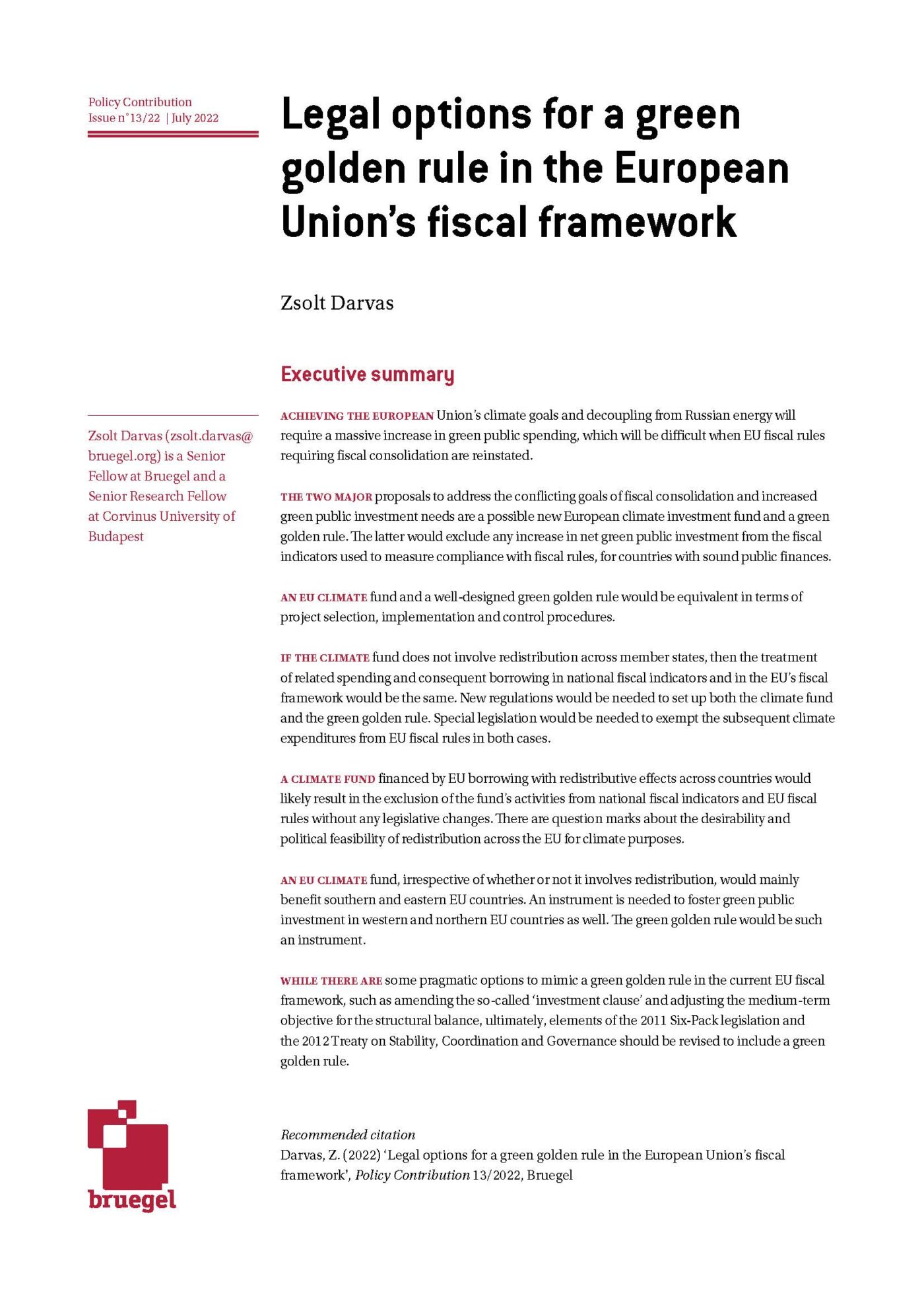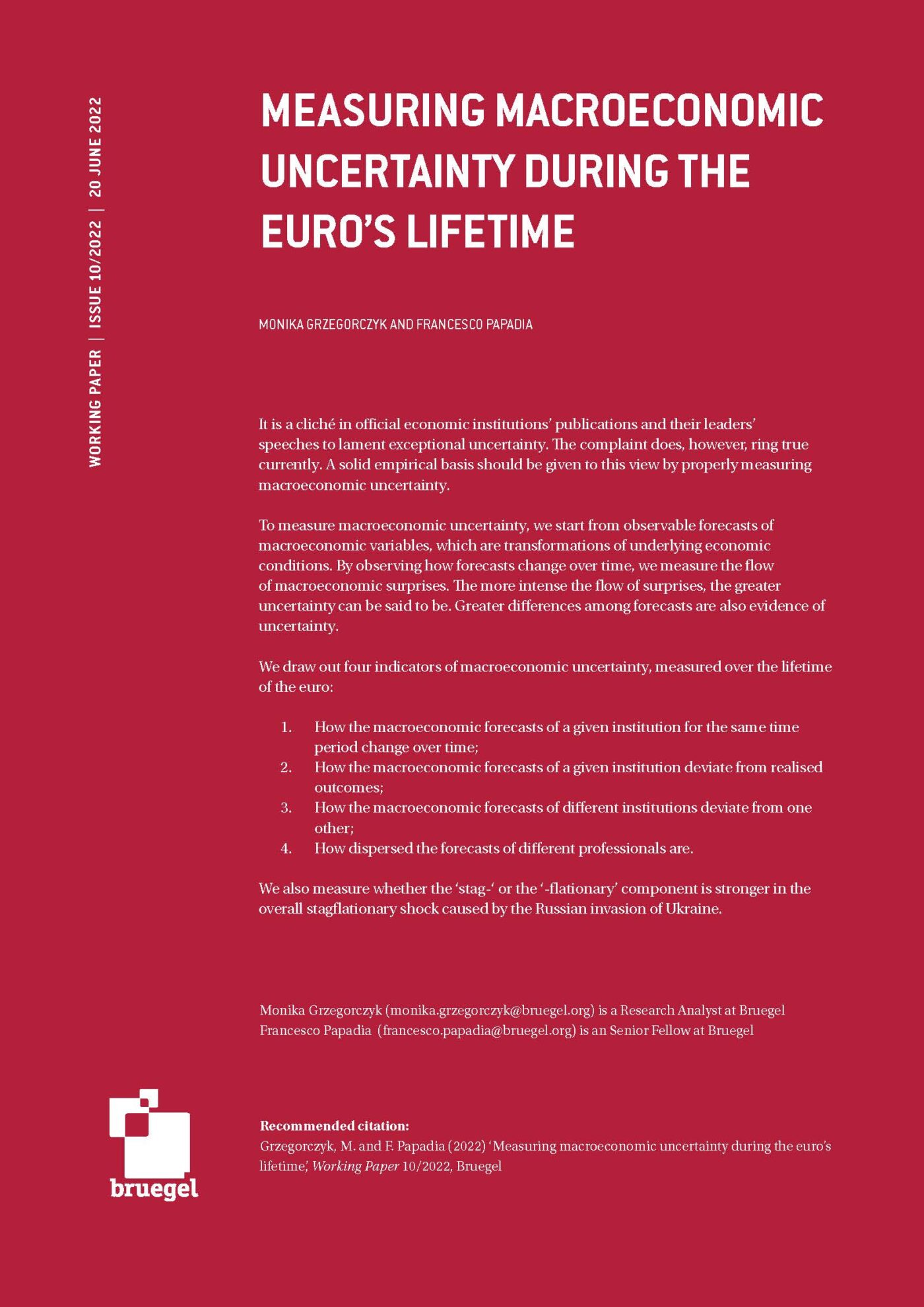Blog Post
Secular stagnation and the future of economic stabilisation
Larry Summers’ and Łukasz Rachel’s most recent study documents a secular fall in neutral real rates in advanced economies. According to the authors, this fall would be even more marked in the absence of offsetting fiscal policies. Policymaking in a world of permanently low interest rates may be hard to navigate, especially in troubled waters. We review economists’ views on the matter
As part of the Spring 2019 edition of the Brookings Papers on Economic Activity, Larry Summers and Łukasz Rachel published On falling neutral real rates, fiscal policy, and the risk of secular stagnation. The paper estimates the natural interest rate, i.e. the interest rate consistent with balanced savings and investment, for all advanced economies. This rate, they find, has fallen by three percentage points over the last generation, and could have fallen by as many as seven percentage points had it not been for government spending. The novelty of the estimation method is that it treats advanced economies as a single economic entity that is fully integrated and works as a closed economy.
What can explain the low rates, despite a decade of large deficits and debt? The answer, according to the authors, lies in the private sector. “Private sector forces dragging down interest rates are more powerful than previously anticipated” and consequently, for savings and investment to be balanced and for the economy to be at full employment, a much lower equilibrium interest rate might be needed for years to come. “The core of the problem is that there is not enough private investment to absorb, at normal interest rates, all the private saving. The result is extremely low interest rates, weak demand, and low growth and inflation, along with the bidding up of the price of existing capital assets.” A corollary of this setting is that “the large increases in government debts that we have witnessed in recent decades are less a consequence of fiscal irresponsibility than a response to shortfalls in private investment relative to private saving”.
One of the ramifications of the neutral real rate being negative is the possibility that policy cannot lead economies towards full employment, even in the long-run. “Satisfactory growth may, given the economy’s current structure, depend on unsustainable policy settings.” The range of policy options is also narrower in the face of a recession. Indeed, as Brad deLong puts it, “a small negative shock that reduces this rate by only a little bit more would drive an economy into territory where the central bank cannot do its job”.
Martin Wolf argues that central banks have been currently “delivering the low real rates the economy needs”, but that “we have come to rely far too heavily on central banks”. Wolf conveys the need for more policy instruments, starting with fiscal policy. In his view, a way to use “public deficits productively” would be to use public investment both to compensate for the lack of private investment and to foster it.
“Perhaps our stagnation is only as secular as macroeconomic policy timidity” – Martin Sandbu, contrary to Wolf, does not think that monetary policy has run out of options. Sandbu notes that, with the US 10-year treasury yield near 3%, the American economy is far from reaching a lower bound – “if one exists” – leaving some scope for more unconventional policies “such as directly targeting long-term interest rates” to be pursued.
David Leonhardt also emphasises the need for new solutions following a decade of “economic surprises”, though policymakers should be wary of the way expansionary fiscal policy is pursued. Leonhardt names the 2017 Trump tax law as a case study of how fiscal policy may only provide a fleeting boost to the economy. The 2.9% expansion in 2018 on the back of temporary tax cuts was short-lived, as seen by the slowdown in growth over the first quarter of 2019.
“A better policy response would start with a tax cut focused on the majority of Americans, not the wealthy.” Another example, put forward by Michael Roberts, is the Japanese case. Despite permanent government budget deficits and full employment, the country still faces “low wages and with temporary and part-time contracts for many (particularly women). Real household consumption has risen at only 0.4% a year since 2007, less than half the rate before”. Indeed, Summers and Rachel draw the possibility of other advanced economies “mirroring the experience of Japan, whereby the very low equilibrium rate of interest seems to be a semi-permanent feature of the economic landscape”.
Following this round of reactions, Summers finds a point of consensus in the view that having balanced budgets and “meaningfully” positive real interest rates simultaneously is not a solution for growth in the industrialised world – if anything, Summers says, it is “a prescription for sustained recession”. Focusing on the available policy responses to secular stagnation, Summers frowns upon the possibility of implementing technical changes to allow for more negative interest rates. The stimulus from those further negative interest rates would be unclear and would target capital costs, which are not the current barrier to investment.
Another point of contention is the quality of investments potentially made at negative rates, and the possibilities of “leveraging, risk seeking and bubbles” in a state of the world where households and firms are paid to borrow. All these points support Summers’ preference for fiscal policies to be the lever – “Government borrowing at negative real rates and investing seems very attractive in a world where there are many projects with high social returns. Moreover, we are accustomed to thinking in terms of debt levels but it may be more appropriate to think in terms of sustained debt service levels”. The response to secular stagnation is not necessarily limited to stabilisation policies. Summers also suggests “fighting monopolies, promoting a more equal income distribution, and strengthening retirement security”.
Secular stagnation may also pose an indirect challenge to emerging economies. Joseph Joyce anticipates how persistently low interest rates in advanced economies can feed into pro-cyclical capital flows in emerging markets. The low interest rates, along with the signs that the Federal Reserve will not raise the policy rates in the near future, both point towards a continued search-for-yield behaviour. While low interest rates “may alleviate some of the pressure on borrowers with high debt loads […] they are susceptible to other shocks such as slowing economic growth or the breakdown of trade negotiations between the U.S. and China. If such a shock occurs, we may once again witness a flight to safety that leaves borrowers in emerging markets vulnerable to ‘sudden stops’ of capital that, combined with depreciating exchange rates, will disrupt their economies.”
Republishing and referencing
Bruegel considers itself a public good and takes no institutional standpoint. Anyone is free to republish and/or quote this post without prior consent. Please provide a full reference, clearly stating Bruegel and the relevant author as the source, and include a prominent hyperlink to the original post.












